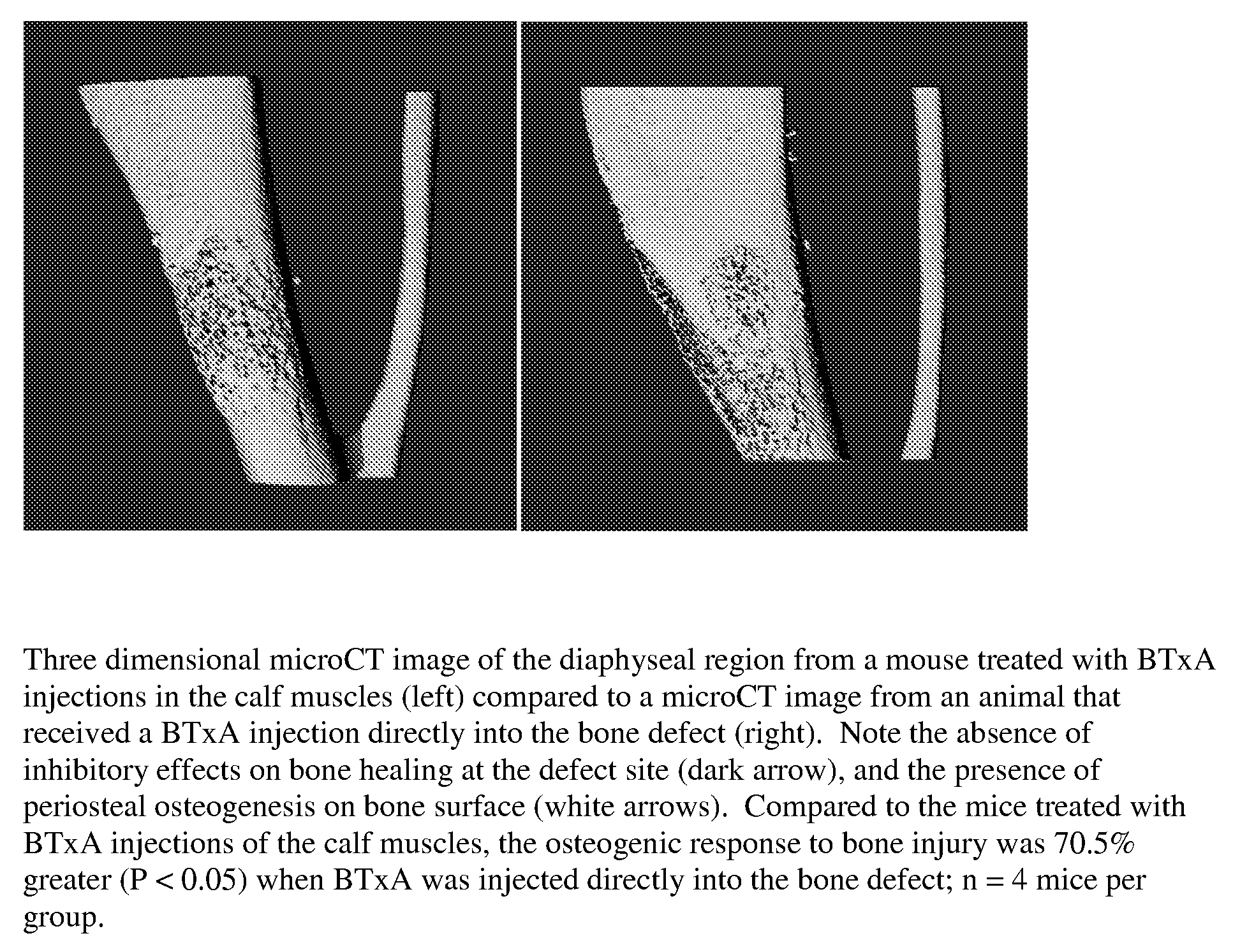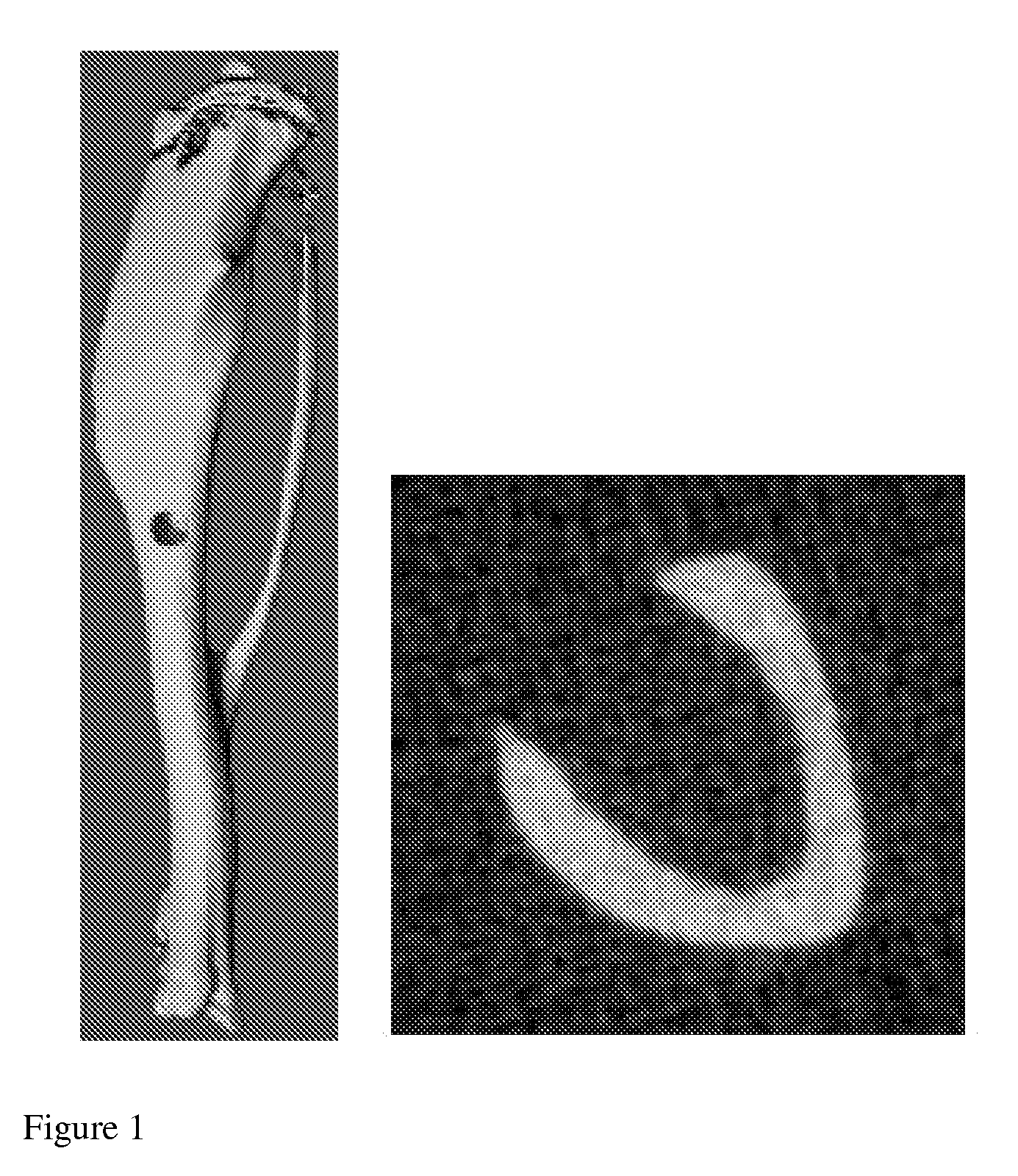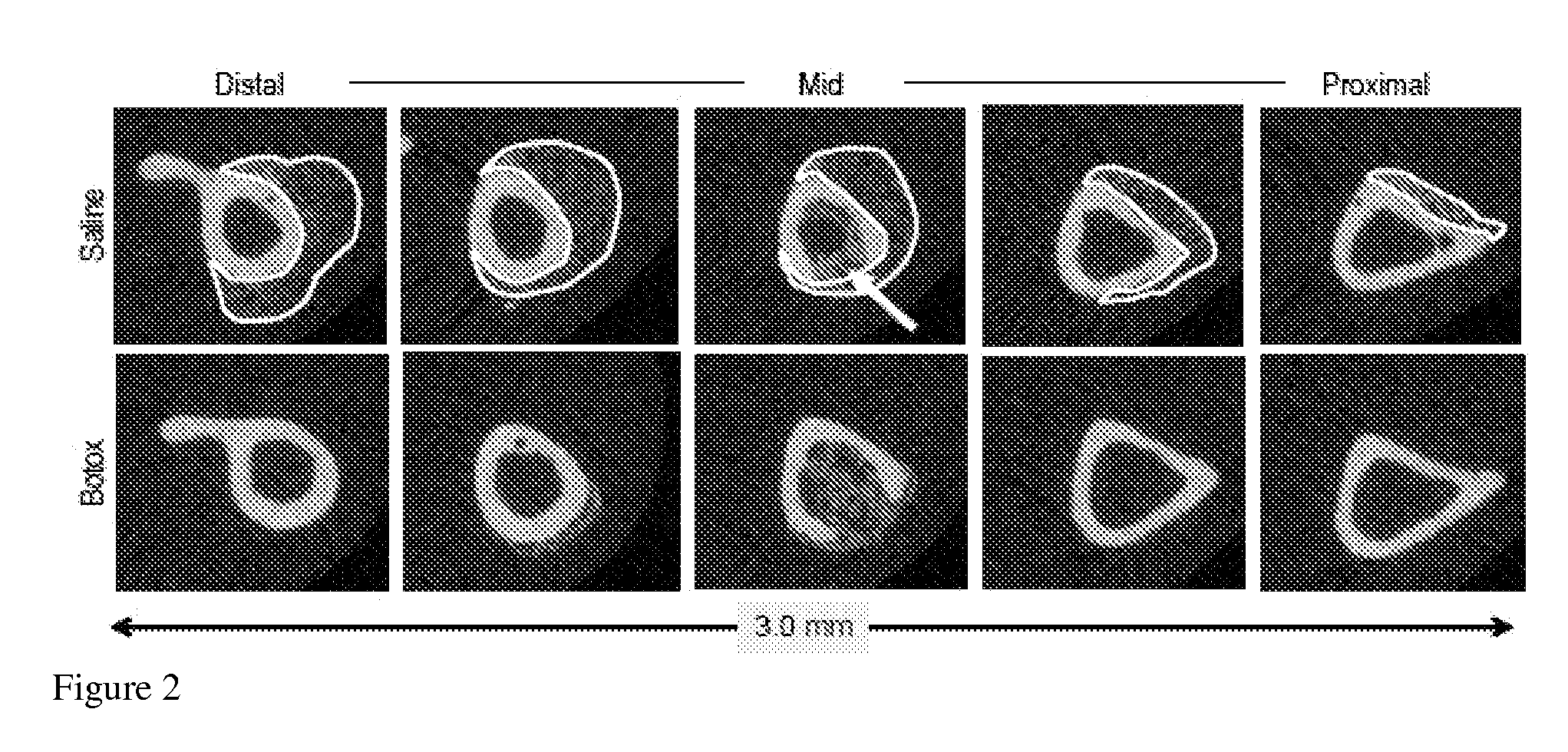Inhibition of pathological bone formation
a technology of pathological bone and inhibition, applied in the direction of biocide, drug composition, peptide/protein ingredients, etc., to achieve the effect of inhibiting bone formation
- Summary
- Abstract
- Description
- Claims
- Application Information
AI Technical Summary
Benefits of technology
Problems solved by technology
Method used
Image
Examples
example 1
Transient Paralysis of Muscle Using Clostridium botulinum Toxin, Type A, Inhibits Trauma-Induced Stimulation of Intramembranous Bone Formation
[0100]Female C57B1 / 6 mice (16 wk) were randomly assigned to one of 2 groups (n=4 per group): 1) TCD+saline; 2) TCD+Botox-Calf. On day 0 of the experiment, each mouse was anesthetized with a ketamine / xylazine anesthetic and an incision was be made over the anteromedial surface of the right tibial diaphysis. The muscle was blunt dissected to expose the periosteal surface and a 0.6 mm diameter penetrating hole was created in the medial cortex approximately 1 mm distal from the termination of the tibial tuberosity (FIG. 1). While still anesthetized, all of the mice in group 1 received an injection of 20 μl sterile saline into the gastrocnemius muscle and all of the group 2 mice received a gastrocnemius injection of Clostridium botulinum toxin, type A (“BT×A”) at a dose of 2.0 units / 100 g body weight in an injection volume of 20 μl. Following surge...
example 2
BT×A does not Directly Inhibit Osteoblast Function
[0104]In order to confirm that the inhibitory effects on periosteal osteogenesis were not a consequence of direct inhibitory actions of BT×A on osteoblast function, a control experiment was conducted in which BT×A was injected directly into the bone defect. Compared to mice injected with BT×A into the calf muscles (n=4), direct injection of BT×A into the bone defect had no effect on the osteogenic response to the skeletal trauma (n=4). Indeed, microCT images at 12 days post injury clearly demonstrated normal healing of the cortical bone defect (FIG. 5) and minimal effects on periosteal osteogenesis, which was 70.5% greater (P<0.05) than the osteogenic response in mice with BT×A injected into the calf muscles.
[0105]Based on these data, one can conclude that the ability of BT×A to inhibit the periosteal osteogenic response to surgically-induced bone trauma is derived from BT×A-induced inhibition of neuromuscular signaling rather than a...
example 3
Inhibition of Neuromuscular Function Proximal to Surgically-Induced Bone Trauma Inhibits the Periosteal Osteogenic Response to Skeletal Trauma but not Bone Formation at the Defect Site
[0108]In a separate control experiment, botulinum toxin A (BT×A; Botox®, Allergan; 2 U / 100 g BW in 20 μl final volume) was injected into the quadriceps muscles of mice that underwent surgically induced skeletal trauma of the tibia. As the quadriceps muscle group overlies the femur, the purpose of this control was to determine if inhibition of neuromuscular function proximal to the defect site would alter the osteogenic response to skeletal trauma.
[0109]Compared to the saline injected controls, BT×A injection of the quadriceps led to nearly complete inhibition of the osteogenic response to skeletal trauma of the tibia; total volume of the callus was 8.8% and bone volume was 10.4% vs. controls (FIG. 6). Significantly, there was no effect of the muscle paralysis on bone formation at the defect site itself...
PUM
| Property | Measurement | Unit |
|---|---|---|
| Diameter | aaaaa | aaaaa |
Abstract
Description
Claims
Application Information
 Login to View More
Login to View More - R&D
- Intellectual Property
- Life Sciences
- Materials
- Tech Scout
- Unparalleled Data Quality
- Higher Quality Content
- 60% Fewer Hallucinations
Browse by: Latest US Patents, China's latest patents, Technical Efficacy Thesaurus, Application Domain, Technology Topic, Popular Technical Reports.
© 2025 PatSnap. All rights reserved.Legal|Privacy policy|Modern Slavery Act Transparency Statement|Sitemap|About US| Contact US: help@patsnap.com



